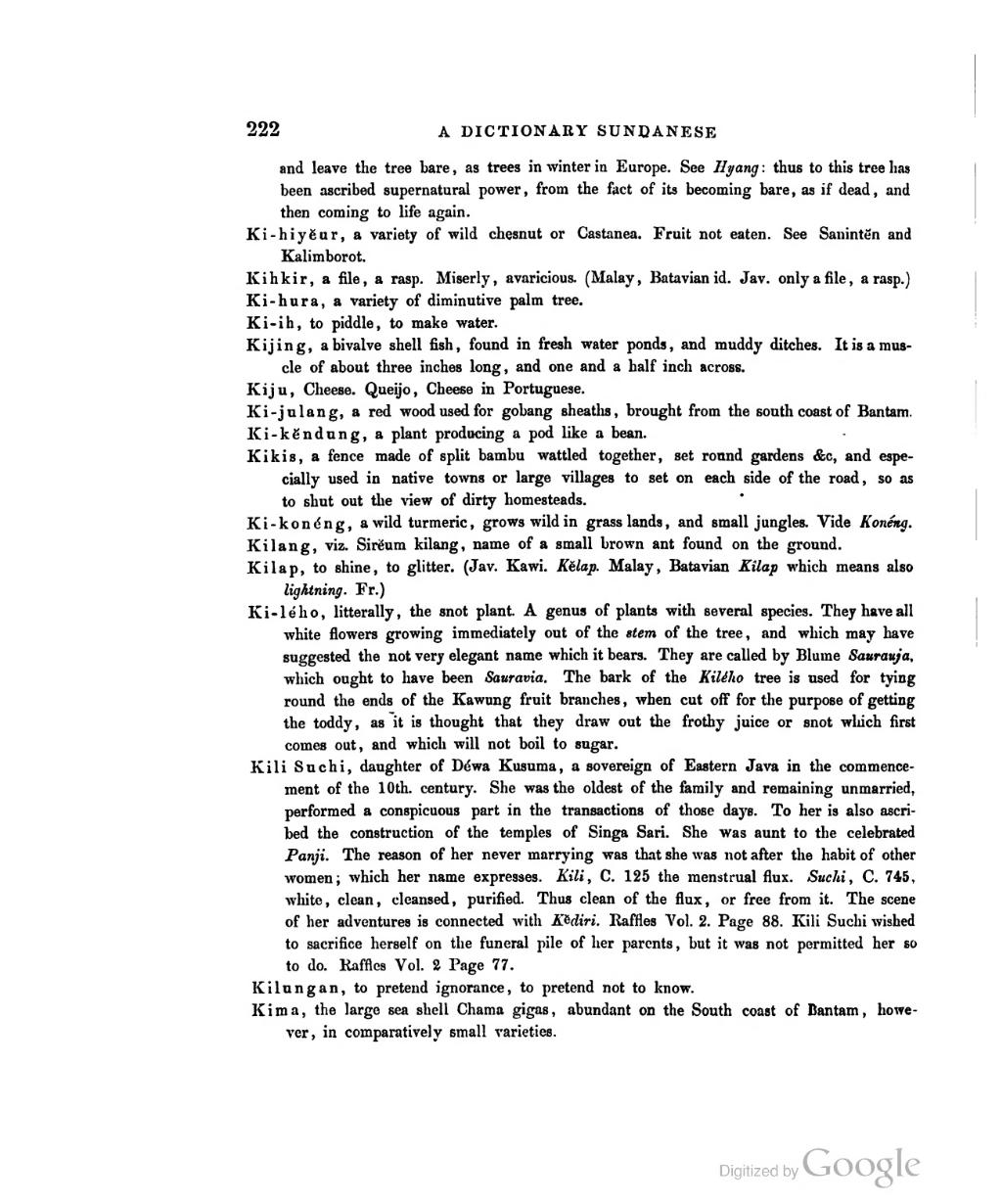and leave the tree bare , as trees in winter in Europe. See Hyang: thus to this tree has been ascribed supernatural power, from the fact of its becoming bare, as if dead, and then coming to life again.
Ki-hiyĕur, a variety of wild chesnut or Castanea. Fruit not eaten. See Sanintĕn and Kalimborot.
Kihkir, a file, a rasp. Miserly, avaricious. (Malay, Batavianid. Jav. only a file, a rasp.)
Ki-hura, a variety of diminutive palm tree.
Ki-ih, to piddle, to make water.
Kijing, a bivalve shell fish, found in fresh water ponds, and muddy ditches. It is a muscle of about three inches long, and one and a half inch across.
Kiju, Cheese. Queijo, Cheese in Portuguese.
Ki-julang, a red wood used for gobang sheaths, brought from the south coast of Bantam.
Ki-kĕndung, a plant producing a pod like a bean.
Kikis, a fence made of split bambu wattled together, set round gardens &c, and especially used in native towns or large villages to set on each side of the road, so as to shut out the view of dirty homesteads.
Ki-konéng, a wild turmeric, grows wild in grasslands, and small jungles. Vide Konéng.
Kilang, viz. Sirĕum kilang, name of a small brown ant found on the ground.
Kilap, to shine, to glitter. (Jav. Kawi. Kĕlap. Malay, Batavian Kilap which means also lightning. Fr.)
Ki-lého, litterally, the snot plant. A genus of plants with several species. They have all white flowers growing immediately out of the stem of the tree, and which may have suggested the not very elegant name which it bears. They are called by Blume Saurauja, which ought to have been Sauravia. The bark of the Kilého tree is used for tying round the ends of the Kawung fruit branches, when cut off for the purpose of getting the toddy, as it is thought that they draw out the frothy juice or snot which first comes out, and which will not boil to sugar.
Kill Suchi, daughter of Déwa Kusuma, a sovereign of Eastern Java in the commencement of the 10th. century. She was the oldest of the family and remaining unmarried, performed a conspicuous part in the transactions of those days. To her is also ascribed the construction of the temples of Singa Sari. She was aunt to the celebrated Panji. The reason of her never marrying was that she was not after the habit of other women; which her name expresses. Kili, C. 125 the menstrual flux. Suchi, C. 745, white, clean, cleansed, purified. Thus clean of the flux, or free from it. The scene of her adventures is connected with Kĕdiri. Raffles Vol. 2. Page 88. Kili Suchi wished to sacrifice herself on the funeral pile of her parents , but it was not permitted her so to do. Raffles Vol. 2 Page 77.
Kilungan, to pretend ignorance, to pretend not to know.
Kima, the large sea shell Chama gigas, abundant on the South coast of Bantam, however, in comparatively small varieties.
